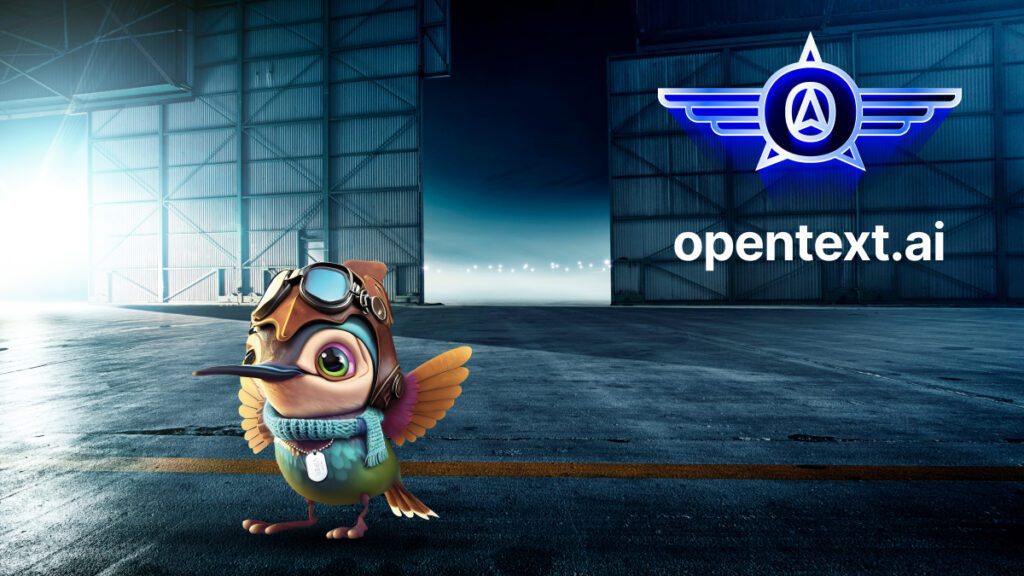Meet Viper, a trusted partner for your AI journey. This AI-generated hummingbird is small but mighty and can help you responsibly leverage AI to reduce negative environmental impacts. With her fast-flapping wings and agility, she leads the way in using AI and Large Language Models (LLMs) to solve complex problems quickly, simply, and sustainably. Trust Viper to help you navigate the principles and best practices of responsible AI.
You: Can hummingbirds really fly backwards?
Viper: Yes, hummingbirds are the only birds that can fly backwards.
You: Do you think AI can help our planet fly backwards? Fight climate change?
Viper: AI-generated hummingbirds can’t change the past. But the power of AI can be applied to climate innovations that can help us reverse some of the impacts we’ve had on the environment through technology. From finding new renewable energy sources to limiting deforestation – humans with AI-hummingbirds are definitely going to be better off.
You: Do hummingbirds really have no sense of smell?
Viper: True fact! And let me tell you, it comes in handy sometimes.
You: Hummingbirds do a lot of good given their tiny size. But AI uses a lot of energy so doesn’t it therefore worsen the problem we’re trying to solve?
Viper: True again, I am small but fit for purpose. Same can be true for AI. Models can consume a lot of energy, but they don’t have to. By using the right AI model for the right job, you can limit energy consumption while fueling your organization’s productivity and innovation. The important thing is to take on that consideration as you are building out your AI strategy.
AI for a sustainable future
AI is playing an increasingly significant role in addressing climate change on many fronts. From quickly analyzing vast amounts of data to predicting climate patterns, AI can help us better understand and respond to the ever-mounting complexities of climate change. It can optimize energy use to increase efficiency by predicting the energy output of renewable sources, controlling intelligent grids, and managing energy storage. The application of AI to drive micro-decisions that can add up to significant environmental impacts has accelerated how it can be put to good use.
Businesses are eager to solve for sustainability utilizing AI. According to a survey conducted by Foundry Research for OpenText that will be released in October, 82% of respondents said AI could greatly or somewhat impact their organizations’ sustainability efforts. And there’s good reason to be hopeful — according to a study by PwC, as much as 4% of global greenhouse gas emissions could be reduced by 2030 through AI applications in the energy, water, transport, and agriculture industries alone, transforming businesses into more sustainable entities.
From pledge to program, organizations are seeking ways to meet Environmental, Social, and Governance mandates. Some are limiting the carbon footprint of their IT estate, some are exploring how to code faster to consume less energy, and others are continuing to embrace digital to transition off paper-based processes.
The trade off
However, the adoption and use of AI is not without its environmental costs. Training large-scale AI models requires considerable computing power and energy — some studies indicate that the carbon footprint of training a single AI model can equal several round-trip flights across the U.S. Deploying and using AI also takes its toll, for example running Large Language Models (LLMs) on massive data sets that require significant compute power for every inference they make.
In a paper published last year by Hugging Face, a provider of machine-learning technologies, Research Scientist and Climate Lead Dr. Sasha Luccioni and team set out to develop a better way to calculate the carbon footprints of LLMs. The goal was to get a better understanding of how much energy AI systems consume, so that organizations can make informed decisions when training and deploying the models. The team determined that BLOOM, a 176-billion parameter language model, emitted approximately 50.5 tons of carbon dioxide emissions when accounting for all related processes, from equipment manufacturing to energy-based operational consumption.
Responsible AI for good
But AI doesn’t have to come with such a high climate cost. One way organizations can limit the consumption of AI is by choosing the right LLM for the right job. By tailoring the size of the LLM to match the complexity of the task, organizations can avoid spending unnecessary amounts of energy on overly complex models. This not only minimizes the carbon footprint associated with AI operations but also paves the way for a more energy-efficient AI landscape.
More sustainable practices in AI development and deployment, such as using renewable energy for compute power, optimizing algorithms for energy efficiency, and applying AI where it can have the most significant impact, can help make a difference.
See AI innovation in action
Join us for OpenText World 2023 in Las Vegas October 11 – 12, where you’ll gain actionable insights and strategies to help you navigate the cognitive era with confidence, including a full slate of featured keynote speakers.
Don’t miss David Wallace-Wells, deputy editor of New York Magazine and author of The Uninhabitable Earth. David speaks with a deep knowledge and understanding of the urgent need to address climate change. As one of the foremost voices in climate science and policy, he advocates for the innovative use of AI in finding sustainable solutions to our planet’s most pressing issues.
Our conference will also feature Elliott Harris, former United Nations chief economist and assistant secretary-general for economic development. Elliot is known for his profound insights on global issues, specifically the economic ramifications of climate change and the urgent need to integrate environmental sustainability into economic policy making. He believes AI is not just a technological innovation, but a transformative tool for sustainable development that warrants careful and responsible implementation.
Also at OpenText World, we’ll showcase our new Aviator products designed to apply AI to improve aspects of your business ranging from IT operations to supply chains and customer experiences. OpenText World attendees will hear more details about our new capabilities and see demos of them in action during the keynote presentations and on the show floor.
Register for OpenText World today and take off on your AI journey with OpenText as your trusted partner.




